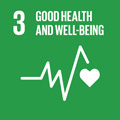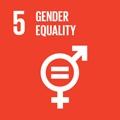- Docente: Virginia Bertini
- Credits: 16
- Language: Italian
- Teaching Mode: Traditional lectures
- Campus: Bologna
- Corso: First cycle degree programme (L) in Midwifery (cod. 6064)
-
from Oct 08, 2024 to Oct 09, 2024
Learning outcomes
At the end of the module, the student will have the ability to apply knowledge and understanding to independently:1)Perform basic care techniques learned in theory, according to midwifery principles, in obstetric, gynecological, and neonatal settings; 2)Develop active listening and communication skills; 3)Establish and maintain professional relationships within the healthcare team.
Course contents
- Application of hygiene and safety principles for infection prevention, with particular attention to obstetric-gynecological and neonatal settings, as learned during lectures in general, clinical, and pediatric care sciences, as well as obstetric-gynecological and neonatal sciences.
- Support for pregnant women, postpartum mothers, and their newborns, considering their specific needs.
- Measurement of vital signs (blood pressure, heart rate, respiratory rate).
- Placement of peripheral venous catheters and urinary catheters, performance of CTG and ECG, blood sampling, and administration of therapy through different routes.
- Observation and recognition of relevant clinical signs in pregnant and postpartum women (pallor, sweating, tachycardia, dyspnea, edema, abnormal bleeding).
- Observation and support for breastfeeding and formula feeding of the newborn.
Note: Given the nature of these activities, participation in this training requires the completion of Modules 1 and 2 through e-learning and attendance at the third module on specific training for health and safety in study and internship settings.
Readings/Bibliography
Costantini, W. (a cura di). (2020). Trattando di scienza ed arte della professione ostetrica. Piccin.
Teaching methods
Experiential learning – Students acquire practical skills through direct involvement in care activities under the supervision of experienced midwifery tutors.
Observation and progressive participation – Initially, students observe activities and are then gradually involved in performing procedures under supervision, until they develop greater autonomy.
Assessment methods
During the internship, learning is monitored through:
Daily activity log: The student documents activities performed, cases followed, and personal reflections. The tutor assesses the student's level of autonomy in the tasks carried out and suggests possible improvements.
Mid-term evaluation form: Completed by the clinical tutor or the internship supervisor to track progress.
Direct observation: The tutor evaluates technical, relational, and decision-making skills.
At the end of the internship period, learning assessment is based on:
Final evaluation form: The tutor assigns a rating on the skills acquired, professionalism, and the student's level of autonomy.
The internship exam is structured as follows:
a) preparation and presentation of a PowerPoint on a topic of the student’s choice, delivered in a plenary session;
b) a practical test with a realistic simulation scenario aimed at verifying the achievement of the learning objectives for the academic year, including the student’s ability to communicate effectively with patients and service users.
During the exam, the examination board will pay particular attention to the student’s use of appropriate technical and scientific language.
The final evaluation will take into account all internship experiences completed.
Teaching tools
Internship evaluation form
Office hours
See the website of Virginia Bertini
SDGs


This teaching activity contributes to the achievement of the Sustainable Development Goals of the UN 2030 Agenda.
